10 Things You Need To Know About Windows Virtual Desktop
The Azure cloud workspace platform will hit its full fiscal year sales forecast four months ahead of schedule, said Microsoft Group Program Manager for Windows Virtual Desktop Scott Manchester.
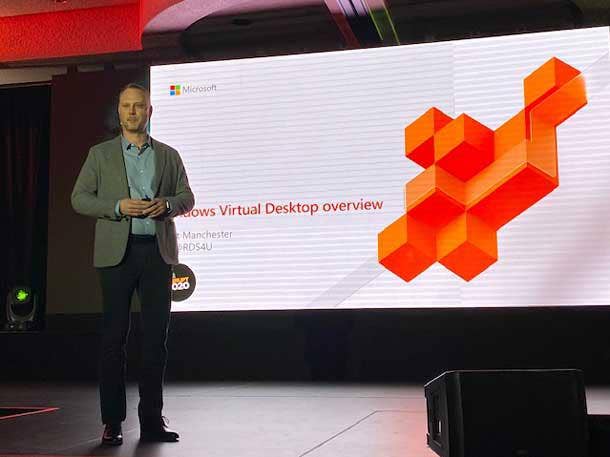
WVD -- Storming The Market
Microsoft’s Windows Virtual Desktop (WVD) service on Azure is exceeding its first-year sales forecast.
In fact, Microsoft Group Program Manager for WVD Scott Manchester said the Azure cloud workspace platform will hit its full fiscal year sales forecast on February 6 – four months ahead of schedule.
“We are seeing pretty high levels of deployment around the world,” said Manchester in a keynote address Tuesday at the IGEL Disrupt 2020 Cloud Workspaces Forum in Nashville, Tenn. “When I wake up every morning, the first thing I do is I bring up my dashboard and I look to see how many new tenants signed up today with WVD. I can’t share all the details but I can tell you it is a three digit number everyday – people that build tenants in WVD. It is very exciting to see the growth.”
Solution providers at the conference said Microsoft’s entry into the cloud desktop-as-a-service market with WVD is poised to drive an Azure VDI (virtual desktop infrastructure) sales bonanza.
Pete Downing, chief marketing technology officer for Huntersville, N.C.-based XenTegra – which just won Citrix’s U.S. partner of the year award – said he expects 30 percent to 60 percent growth in the overall desktop-as-a-service market this year with Microsoft entering the space. “The domino effect is crazy,” he said. “Every customer is asking about Windows Virtual Desktop and Azure. I have never seen a sales pipeline for a product grow as fast as Microsoft WVD and Azure. Microsoft has validated desktop as a service.”
Downing said he expects the desktop-as-a-service frenzy to drive triple-digit growth for XenTegra’s Azure business this year.
Below are excerpts of Manchester’s keynote address.
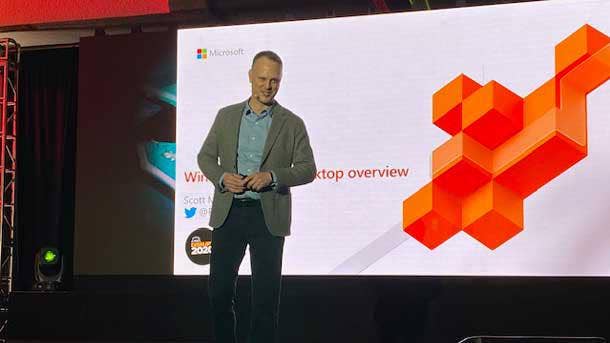
Strong Customer Demand For WVD
“We are going to hit our fiscal year goals. We are going to land them – Feb.6 is the current forecast. By the end of June 30 [last year] I had set the target for where we wanted to be with the number of users, the number of tenants, the number of VMs [virtual machines] being managed and the number of VM core hours. We are tracking all those statistics and we are going to hit them in February for targets that we set for the end of June.”
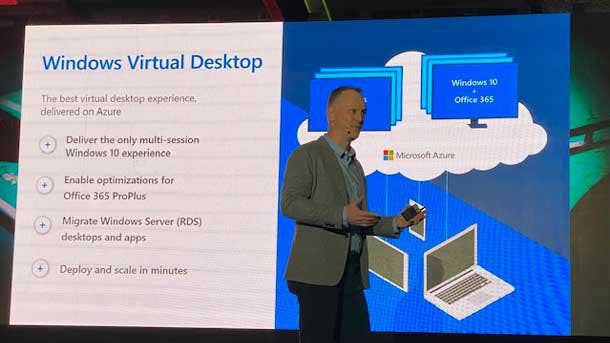
A ‘Huge’ Financial Investment In Azure Cloud Security
“WVD provides the best security model for you. As I mentioned, there are no inbound ports required for the VNet [Azure Virtual Network] where the VMs are hosted. We do all our communication over an outbound SSL 443 connection. So the virtualization platform is highly secure. It is built on Azure and built around [Microsoft Office] 365. You do not get access to your VM until you pass through Azure Active Directory authentication, and Azure Active Directory authentication gives you so much flexibility in setting up multifactor authentication, conditional access policies. The amount of investments we make to ensure that is a very hardened solution for you [is enormous]. We analyze over 6.5 trillion data points everyday and use that to feed our security graph that helps us identify any intrusions or attacks in Azure Active Directory and the applications and services that sit behind it. We make huge financial investments to make sure that Azure is the most trusted cloud. We have over 90 certifications around this as well.”
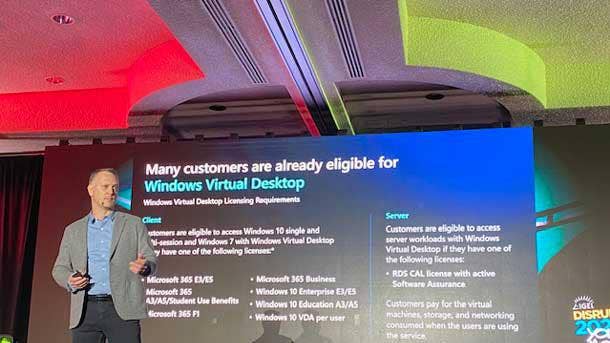
WVD Provides A New Security Model With Global Reach
“WVD provides a new security model where we use something that we call reverse connect technology, meaning you are no longer opening ports ... So you are connecting up through our [Azure] service. So where our service lives has an impact on the performance of the virtualization experience. But we are very versatile and very agile. We have 56 global data centers – global regions that we support. So we have the ability to reach you where your customers are and to ensure that we have got the highest performance and best flexibility for those customers.
So in the short time between when we released at Ignite [last November] where we announced we had already been deployed into Europe and Japan – based on customer hot zones where we saw customers deploying product and where some of the field were coming to us saying we have this great opportunity in South America but they are seeing latencies that are a little too high – so weeks later we were excited to announce that we deployed additional resources in South America and Brazil, Southeast Asia, Japan, Australia, India and we are continuing to add additional resources as the market demands.”
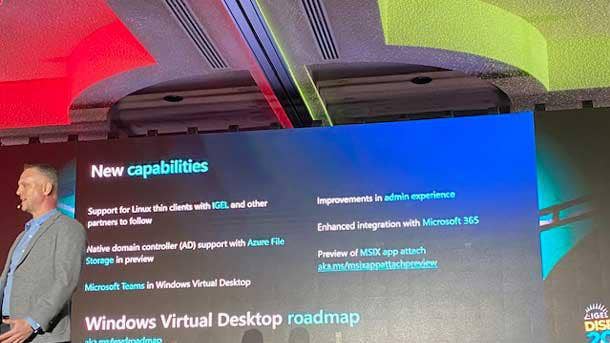
Coca Cola Was ‘Tipping Point’ Fir WVD
“We announced [at Ignite on November 4, 2019] that we had a customer who was using WVD with an IGEL endpoint in full production. That customer was Coca Cola.
Coca Cola was the tipping point for WVD. In the meeting that we decided to take RDmi [the precursor to WVD] and make it a finished service on Azure called Windows Virtual Desktop was a meeting with Terry Myerson [a former Microsoft Windows executive who is now an operating executive with private equity powerhouse The Carlyle Group]. Terry Myerson had just finished meeting with Coca Cola that day and Coca Cola said, ‘Why don’t you guys build a first-party service? Why am I managing this virtualization infrastructure? Why don’t you offer that as a service on top of Azure?’ The next meeting I had was with Terry, and Terry said, ‘Build it as a service. Build it as a first-party service.’ Coca Cola was that tipping point to kind of put him over the top to make that decision.”

A Better Licensing Model
“Availability of the technology is important. If we make the licensing so complex and so expensive, then it is dead on arrival. So we significantly changed the licensing model.
Effectively what you get when you run a Linux workload on a VM in Azure is discounted pricing. You are not paying for the licensing of the OS because that is already included. What grants you a license to WVD, both our native and our Citrix and VMware partner products on top of WVD, is simply a Windows license.”

WVD On Azure – Shipping Every Day
“WVD ships every day. We build a new version of it. We ship it internally ... and then it goes out to our broader set of customers, and then it gets out to our validation ring.
To be able to innovate and bring new value to customers every day gives us also the opportunity to have a more engaging discussion with folks like you, asking ‘What if it could do this? What if you could add this?’ ... I don’t have to wait three years to bring you that value. I can bring you that value in three months or a month, even before that gets out to our final validation rings.”

WVD Supports Thin Clients With IGEL
“Windows Virtual Desktop supports thin clients. IGEL was our go-to-market partner. We were excited to be on stage with [IGEL Co-CEO] Jed [Ayres] last November and share with the world the great innovation we had done. To see some of these exciting end point devices with [IGEL UD Pocket].
What an exciting thing to be able to put a flash drive in your machines and boot to an operating system that give you access to a whole other world of corporate applications. Imagine the BYOD [Bring Your Own Device] scenarios. They talk about repurposing Windows laptops, but what about BYOD? I don’t want to put any agent on my machine for my corporation, but I can take my laptop, plug that flash drive in and boot into a whole other world – my corporate world.
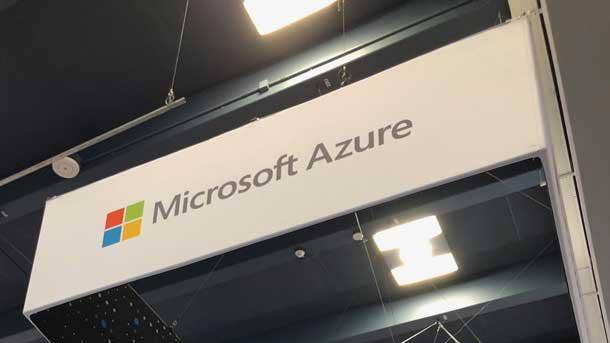
Coming Soon: The Azure Portal Experience
“CloudJumper is here. They have done an amazing job building a nice front end on top of WVD that manages the infrastructure and provides a whole bunch of unique value. Other partners have built tools in this space as well, but ultimately we need to have an Azure Portal Experience. We heard that loud and clear from our customers.
At Ignite we showed a great demo of how that is evolving. I actually have got a working deployment built from the ground up.
The Portal Experience is done. We are continuing to add some features to it, but we are building some additional platform enhancements that we are going to add as well.
We will have the ability now for you to support groups – some of you are trying to deal with assigning specific end users to an application group or policies on user by user basis…Natively supporting groups is going to be a significant time-saver for you folks out there.
Keep an eye out for the new management experience – the portal – that will be coming around May or June of this year. We committed to the first half of 2020 for this, and we are on well on track to hit that timeline.”

New Use Cases
“Our goal wasn’t simply to create a new solution in a well developed market with great partners and great technologies that were already available. We wanted to build something that created new use cases and expanded the market for all of you.
[Gartner Vice President] Mark [Lockwood] said it well, that end user computing was kind of put out to pasture a little bit. Five or 10 years ago there was not a lot of energy, and it was committed folks like you in this room that stuck it out and said, ‘I still believe in the technology. I believe in the value it brings to customers. At some point in time there will be an inflection point, and I believe this technology will take off.’ That is what we wanted to build. That is what we wanted to have happen through partnerships working with folks like you, Citrix and VMware, hardware manufacturers like IGEL, Samsung, HP, Dell and others.
We wanted to expand the market, not simply just move one customer from this use case to this use case scenario or from this technology to this technology. To do that, you have to offer something new and compelling: so higher level of security, a new user experience, something that is different and better than what they had before and something that creates a cost model that allows their reach to expand. We are not introducing virtualization to customers that have never used virtualization before. We are expanding their use case scenarios.
About three years ago I went through an exercise where I went through our top 2,000 Microsoft customers based on revenue, and I got through all 2,000 and not a single one of them did not have a [Windows Server] RDS [Remote Desktop Services] CAL, meaning our top 2,000 customers, all of them use virtualization. You would see wild numbers – these guys have 10,000 seats, these guys have five seats ... Why is it that some companies only use it in very modest use case scenarios and some in very large use case scenarios and what is our opportunity to increase the number of folks taking advantage of this great technology.”

WVD Partnerships Are Key
“This whole [IGEL DISRUPT 2020] event is about being disruptive. It is really hard to be disruptive in isolation. Disruption happens through great partnerships, through great product and great innovation. You are all very much responsible for the injection of energy and interest and all the new business opportunities that are coming into this space.
I have shared stories with some of you over the last day or so on how this whole industry has affected my life and my career. It is amazing to do all this with friends and family. Hats off to all of you guys. It’s been a great run. I am really excited about the next wave of innovation coming from Microsoft and coming through partners like you.
I am really excited to finally get up on stage and share a little more details about the great work we have done through partnerships, IGEL being kind of the canonical example of what you can do with partnerships, how that has changed their business, how that has affected us and our business and how that changes things for you as well.”